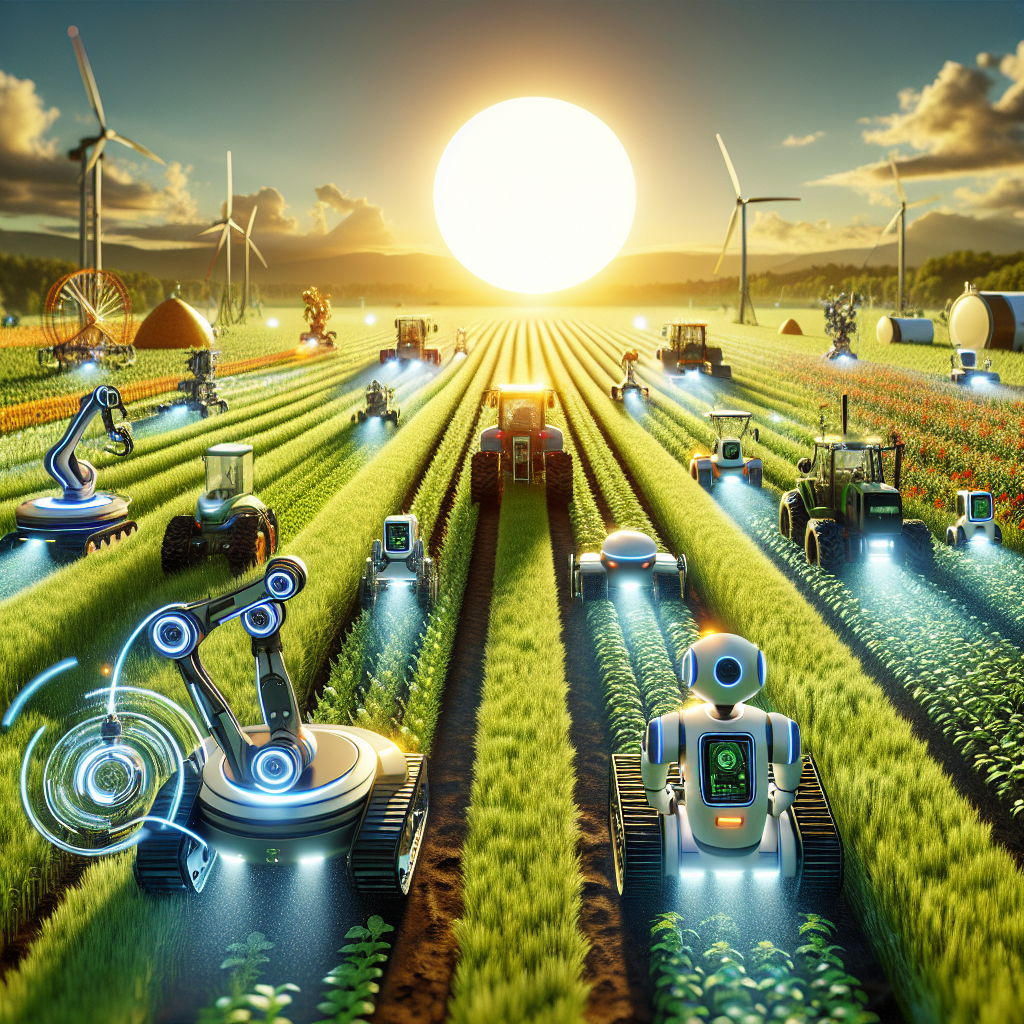The Future of AI in Agricultural Robotics
Introduction
Agriculture has always been a labor-intensive industry, requiring farmers to spend countless hours tending to crops and livestock. However, with advances in technology, the agricultural sector is undergoing a major transformation. One of the most significant advancements in recent years is the integration of artificial intelligence (AI) in agricultural robotics. AI-powered robots are revolutionizing the way farmers work, increasing efficiency, reducing labor costs, and improving crop yields.
AI in Agricultural Robotics
AI-powered robots are equipped with sensors, cameras, and other technologies that allow them to collect data about the environment and make decisions based on that information. These robots can perform a wide range of tasks, from planting seeds and applying fertilizer to monitoring crop health and detecting pests. By using AI algorithms, these robots can analyze data in real-time and adjust their actions accordingly, making them more efficient and effective than traditional farming methods.
One of the key advantages of AI in agricultural robotics is its ability to increase precision. Traditional farming methods often involve blanket applications of fertilizers and pesticides, which can lead to waste and environmental damage. AI-powered robots, on the other hand, can apply inputs in a targeted manner, reducing waste and minimizing negative impacts on the environment. By using AI to analyze data from sensors and cameras, these robots can identify areas of the field that need attention and apply inputs only where necessary.
Another benefit of AI in agricultural robotics is its ability to increase productivity. AI-powered robots can work around the clock, performing tasks faster and more efficiently than human labor. This can help farmers increase their yields and reduce their reliance on manual labor. In addition, AI-powered robots can work in harsh conditions that may be unsafe for humans, such as extreme temperatures or toxic environments.
The Future of AI in Agricultural Robotics
The future of AI in agricultural robotics looks promising, with continued advancements in technology and a growing demand for sustainable farming practices. As AI algorithms become more sophisticated, robots will be able to perform increasingly complex tasks, such as identifying and removing weeds, predicting crop yields, and even harvesting crops autonomously. These advancements will help farmers increase their efficiency, reduce their environmental impact, and improve their bottom line.
One area where AI in agricultural robotics is expected to have a major impact is in the area of precision agriculture. Precision agriculture involves using data-driven technologies to optimize farming practices, such as planting, irrigation, and fertilization. By combining AI with robotics, farmers can collect and analyze data in real-time, allowing them to make more informed decisions about how to manage their crops. This can lead to increased yields, reduced costs, and improved sustainability.
Another area where AI in agricultural robotics is expected to make a difference is in the area of climate change. As global temperatures rise and weather patterns become more unpredictable, farmers are facing new challenges in maintaining their crops. AI-powered robots can help farmers adapt to these changes by providing real-time data on weather conditions, soil moisture levels, and crop health. By using this information to make decisions about when to plant, irrigate, and harvest, farmers can better protect their crops from the effects of climate change.
FAQs
Q: How much does AI in agricultural robotics cost?
A: The cost of AI-powered robots can vary depending on the size and capabilities of the robot. However, as technology advances and more companies enter the market, the cost of these robots is expected to decrease over time.
Q: Are AI-powered robots safe to use on farms?
A: AI-powered robots are designed to be safe to use on farms, with built-in safety features and protocols to prevent accidents. However, it is important for farmers to receive proper training on how to use these robots safely and effectively.
Q: Will AI in agricultural robotics replace human labor?
A: While AI-powered robots can perform many tasks more efficiently than humans, they are not likely to replace human labor entirely. Instead, these robots are designed to work alongside farmers, helping them increase their productivity and efficiency.
Q: What are the environmental benefits of AI in agricultural robotics?
A: AI-powered robots can help farmers reduce their environmental impact by applying inputs in a targeted manner, reducing waste, and minimizing the use of harmful chemicals. This can help farmers improve their sustainability and protect the environment for future generations.
Conclusion
AI-powered robots are transforming the agricultural industry, offering farmers new tools to increase their efficiency, reduce their environmental impact, and improve their bottom line. As technology continues to advance, the future of AI in agricultural robotics looks promising, with robots expected to perform increasingly complex tasks and help farmers adapt to the challenges of a changing climate. By harnessing the power of AI, farmers can revolutionize the way they work, leading to a more sustainable and productive agricultural sector.

